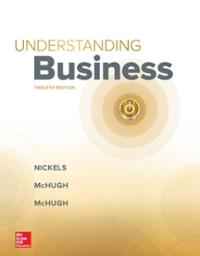I just need the Odd-numbered
Part 2. Matching: Match the Key terms in Column "A" with the definitions in Column "B" by writing the block (upper) case letter of your choice under column "A" and match the definitions in column "B" with the meanings or examples or real world applications in column "C" by writing the small (lower) case letter of your choice under column "B". Column "A" Column "B" Column "C" 1. Price Level A. An increase in the price level. a. The rate that measures the economically active population 2. Price Index B. The percentage of the civilian non-institutional population that is outside institutions like mental hospitals & prisons, either employed: Employment rate = Number of employed persons/Civilian employed or actively looking for jobs. 3. Consumer Price non-institutional population b. The rate that measures the number of working people. Index C. The weighted average of prices of a specific set of goods and C. A type of unemployment created when workers are switching services purchased by a typical household; a widely cited index jobs or between jobs. This creates an opportunity to 4. Base Year number for the price level. reallocate labor resources to their best use. 5. Inflation D. The percentage of the civilian non-institutional population that is d. A year selected by National Income Accountants to represent in the civilian labor force: Labor force participation rate = Civilian a normal year to compare and contrast economic 6. Real Income labor force/Civilian non-institutional population performances. E. The year chosen as a point of reference or basis of comparison e. The rate that measures the people who are actively looking 7. Nominal Income for prices in other years; a benchmark year. for job but cannot be employed. 8. Unemployment F. Nominal income adjusted for price changes. f . The type of unemployment created due to changes in the structure of the economy, such as when the gas engine is Rate G. The condition that exists when the unemployment rate is equal to the natural unemployment rate. replaced by an electrical engine in a car company. 9. Employment H. Unemployment that is due to the natural frictions in the economy 9- An index that shows the upward or downward trend or stable Rate and that is caused by changing market conditions and represented nature of prices for goods and services. 10. Labor Force by qualified individuals with transferable skills who change jobs. h. Money income an individual receives as take home pay. Participation Rate I. A measure of the price level. The unemployment rate that exists even if the economy is J. Unemployment due to structural changes in the economy that operating at "full capacity" and at "full employment", like 3 - 11. Frictional eliminate some jobs and create others for which the unemployed 5% for the U.S. in recent decades. Unemployment are unqualified. j. Income expressed by the amount of goods & services that it 12. Structural K. The current dollar amount of a person's income. can buy or measures the purchasing power of nominal Unemployment L. The percentage of the civilian force that is unemployed: income in terms of goods and services. Unemployment rate = Number of unemployed persons/Civilian labor K. Continuous or sustained increase in the price of most of 13. Natural force. goods and services. Unemployment M. The difference between the unemployment rate and the natural I. Representative of all prices of goods and services. unemployment rate. m. A situation whereby the economy is operating at or near full 14. Full Employment N. Unemployment caused by frictional and structural factors in the capacity using available resources. 15. Cyclical economy: Natural unemployment rate = Frictional unemployment n. An index that shows the level of prices for selected basket of Unemployment rate + Structural unemployment rate consumer goods and services that are commonly used. O. A weighted average of the prices of all good and services. O. The rate that measures the level of unemployment rate due to Rate the cyclical nature of economic activities. 3







